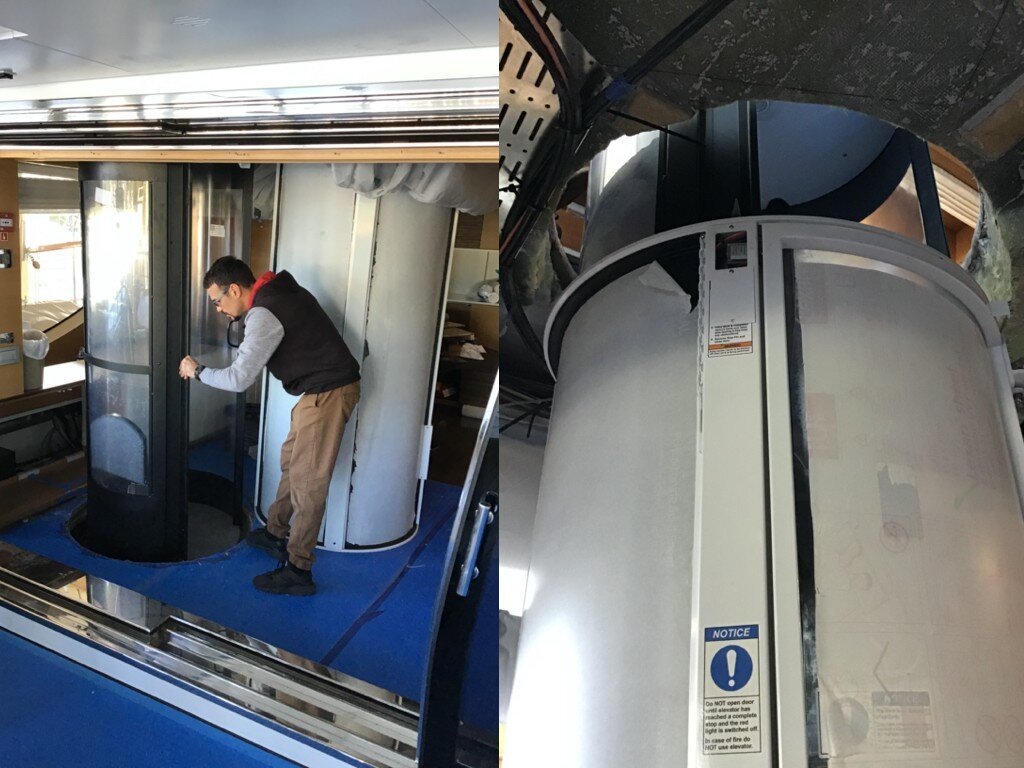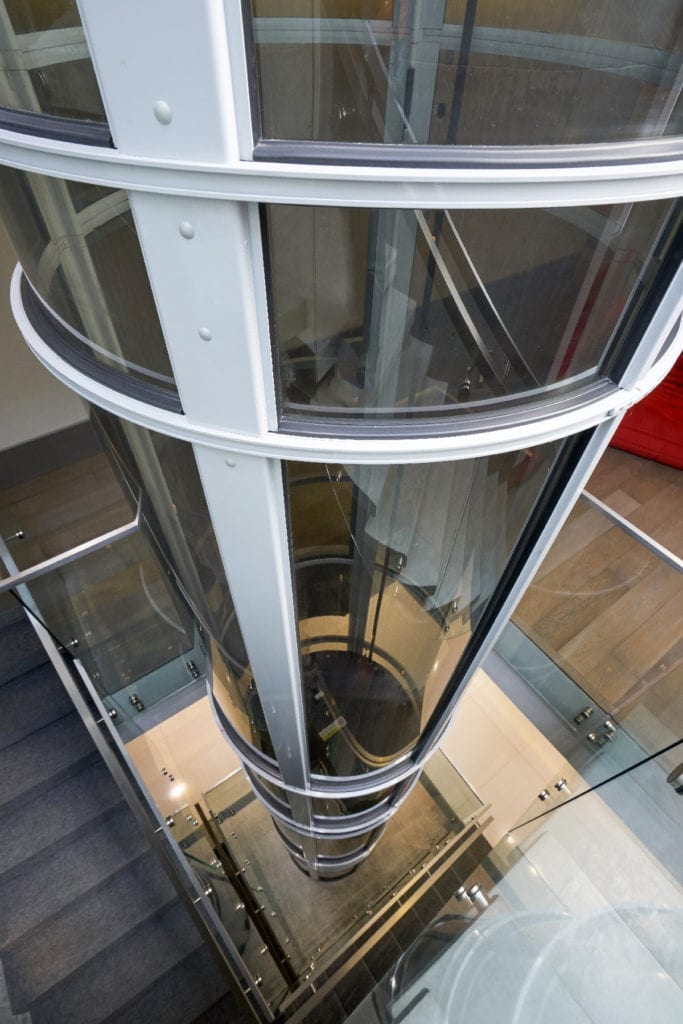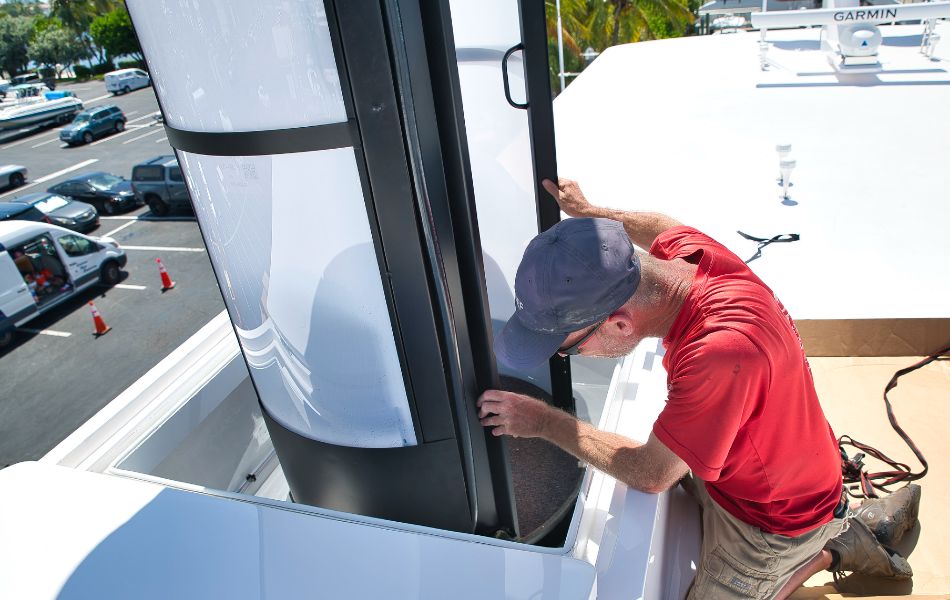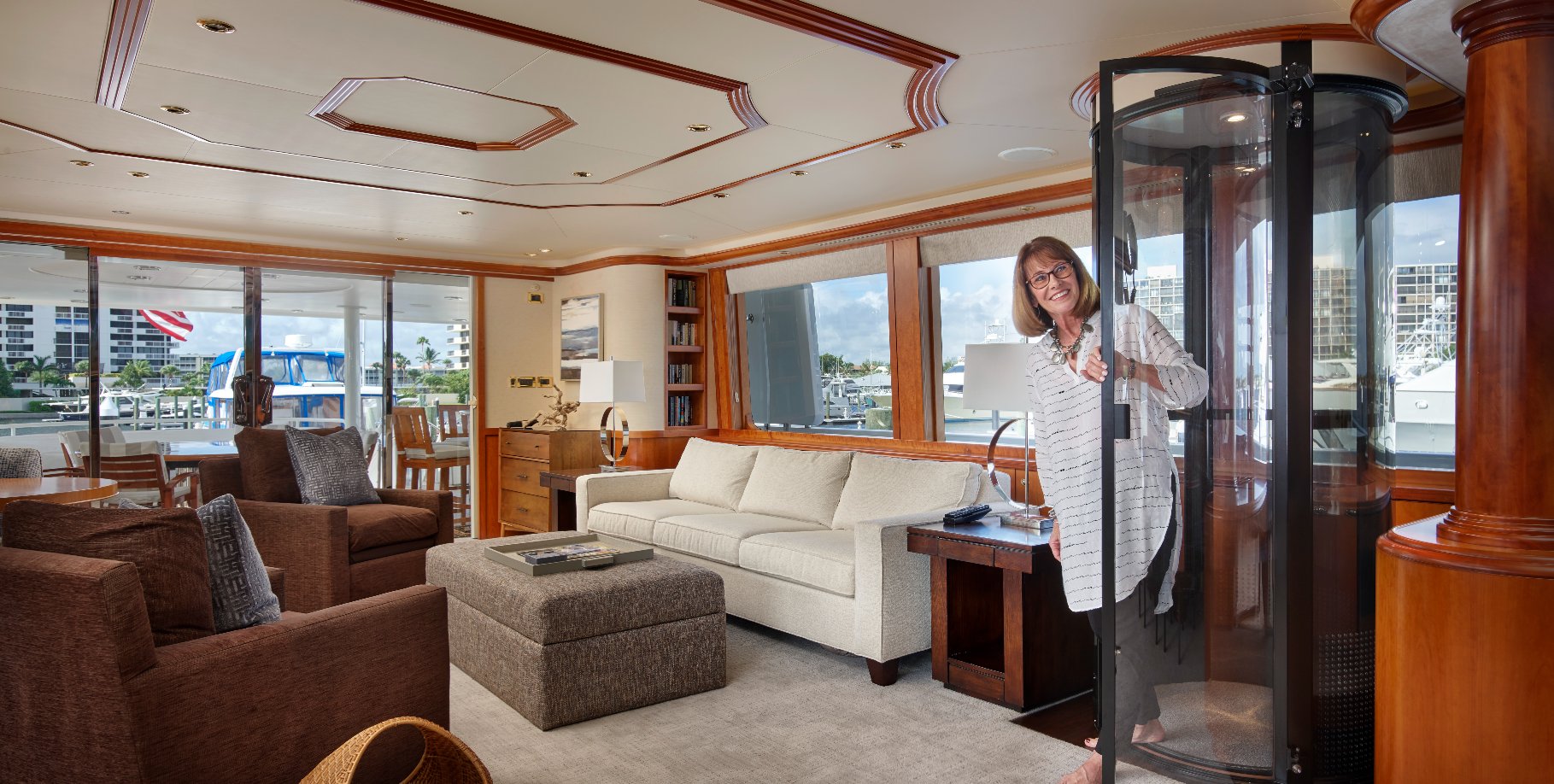Living in a multi-story home with an elevator comes with undeniable convenience. But just like any complex machine, your residential elevator can encounter glitches and malfunctions. While tackling minor issues yourself is tempting, knowing your limits and prioritizing safety are crucial. This guide equips you with the basics of residential elevator troubleshooting, helping you identify common problems and determine when professional intervention is necessary.
Understanding Your Residential Elevator

Before diving into troubleshooting, let’s gain a basic understanding of how your elevator operates. Most residential elevators fall into two categories: hydraulic and traction.
- Hydraulic elevators: These use a piston and pressurized fluid to raise and lower the cab. Their operation is relatively simple, with fewer moving parts.
- Traction elevators: These employ a hoisting rope and a counterweight to move the cab. They are typically smoother and quieter than hydraulic models but have more complex mechanisms.
Understanding your specific elevator type is key to tackling basic troubleshooting effectively. Consult your owner’s manual or contact the manufacturer for details.
Troubleshooting Common Issues
Now, let’s address some of the most frequent residential elevator problems and potential solutions:
1. The elevator won’t move:
- Check for power outages: Ensure your home has electricity, and the elevator’s dedicated circuit breaker hasn’t tripped.
- Inspect the door sensors: Make sure all doors are properly closed and their safety sensors are unobstructed.
- Examine the call buttons: Verify the buttons are functioning and haven’t become stuck.
- Consult the emergency call button: If none of the above resolve the issue, use the emergency call button to contact support.
2. The elevator jerks or makes unusual noises:
- Clean the tracks and rollers: Dirt and debris can cause jerky movements. Use a soft cloth and appropriate cleaning products to remove grime.
- Lubricate moving parts: Consult your manual for designated lubrication points and use recommended lubricants.
- Listen for specific sounds: Grinding noises might indicate worn bearings, while squeaking could suggest lubrication issues. Identifying the type of sound can help guide professional diagnosis.
3. The elevator door won’t open or close properly:
- Clear obstructions: Check for objects blocking the door’s path or interfering with the sensors.
- Test the manual door release (if equipped): Use this feature cautiously only in emergencies, following the manufacturer’s instructions.
- Inspect the door rollers and tracks: Similar to troubleshooting movement issues, ensure these components are clean and free of debris.
4. The lights inside the elevator are flickering or not working:
- Check the bulbs: Replace them with compatible replacements as specified in your manual.
- Inspect the light fixtures: Look for loose connections or damage to the fixtures themselves.
- Consider the power source: If bulbs and fixtures seem okay, the issue might lie with the dedicated electrical circuit.
5. The emergency call button isn’t working:
- Test the button: See if it feels loose or unresponsive.
- Consult your manual: It will provide specific instructions on testing and resetting the emergency call system.
- Do not ignore this issue: Even if the elevator seems operational, a malfunctioning emergency call button is a serious safety concern. Contact a qualified technician immediately.
When to Call a Professional

Remember, your safety is paramount. While some basic troubleshooting is acceptable, here are situations where contacting a professional elevator technician is crucial:
- Any issue involving electrical components: Attempting to fix electrical problems yourself is extremely dangerous and should be left to qualified electricians or elevator technicians.
- Complex mechanical issues: If the problem involves worn bearings, malfunctioning door sensors, or any internal component you’re unfamiliar with, seek professional help.
- Recurring issues: Even if you manage to fix a problem temporarily, frequent recurrence indicates an underlying issue requiring professional attention.
- Safety concerns: Any situation that compromises your safety or the safety of others, such as malfunctioning brakes or doors not closing securely, demands immediate professional intervention.
Conquering Residential Elevator Woes: How PVE Team Can Be Your Superhero
Imagine this: you’re enjoying the sunset from your top-floor balcony, only to discover your elevator has decided to take a permanent vacation on the ground floor. Panic sets in, visions of endless stair climbs dance in your head, and despair threatens to engulf you. But fear not, for the valiant PVE Team is here to swoop in and save the day (or rather, your elevator)!
Why Choose PVE Team for Your Residential Elevator Needs?
We understand the inconvenience and frustration that a malfunctioning elevator can cause. That’s why we offer a comprehensive range of services to ensure your residential elevator runs smoothly and safely:
- Expert Troubleshooting: Our highly trained technicians possess the knowledge and experience to diagnose even the trickiest elevator issues, whether it’s a flickering light, a jerky ride, or a complete shutdown. We use advanced tools and techniques to pinpoint the problem quickly and accurately.
- Swift Repairs: Time is of the essence when your elevator is out of commission. Our team prioritizes your needs and strives for prompt repairs, minimizing downtime and disruption to your daily life. We use high-quality parts and adhere to strict safety standards to ensure long-lasting repairs.
- Preventative Maintenance: Proactive maintenance is key to preventing major issues and extending the lifespan of your elevator. We offer customized maintenance plans tailored to your specific elevator and usage patterns, catching potential problems before they arise and saving you money in the long run.
- 24/7 Emergency Support: Elevator emergencies don’t wait for convenient hours. That’s why we provide 24/7 emergency support, ensuring you have access to help whenever you need it, day or night. Our technicians are on standby to address urgent issues and get your elevator back in operation as soon as possible.how
- Competitive Rates and Flexible Financing: We understand that elevator repairs can be costly. That’s why we offer competitive rates and flexible financing options to make our services accessible to everyone. We work with you to find a solution that fits your budget and needs.
More Than Just Repairs: PVE Team – Your Elevator Partner
The PVE Team goes beyond just fixing your elevator. We are your partners in ensuring its smooth and safe operation for years to come. Here’s how we add value:
- Safety Compliance: We ensure your elevator adheres to all relevant safety regulations and codes, giving you peace of mind knowing your family and home are protected.
- Accessibility Solutions: We offer accessibility solutions such as wheelchair lifts and platform lifts to enhance your home’s usability for everyone.
- Modernization Upgrades: Looking to modernize your elevator? We can help you upgrade your system with the latest technology, improving convenience, efficiency, and even the aesthetics of your home.
- Long-Term Support: We don’t disappear after a repair. We offer ongoing support and maintenance plans to keep your elevator running smoothly and prevent future problems.
Don’t Wait for Disaster, Call PVE Team Today!
Residential Elevator FAQs: Unraveling the Mysteries, One Question at a Time
Facing troubles with your home elevator? Don’t worry, you’re not alone. While some issues can be addressed with basic troubleshooting, others require professional attention. Let’s delve into some frequently asked questions about residential elevators and shed light on how to handle them:
How do you troubleshoot a residential elevator?
Start with the basics:
- Check the power: Ensure your home has electricity and the dedicated elevator circuit breaker hasn’t tripped.
- Inspect the doors: Confirm all doors are securely closed and their safety sensors are unobstructed.
- Test the call buttons: Verify the buttons function properly and aren’t stuck.
- Consult the emergency call button: If basic checks fail, use it to contact support.
For more complex issues:
- Refer to your manual: It provides specific troubleshooting steps based on your model.
- Seek professional help: If unsure about the cause or uncomfortable tackling the issue yourself, contact a qualified technician.
What are common faults in elevators?
- Door problems: Misaligned doors, malfunctioning sensors, or obstructions hindering closing.
- Electrical issues: Power outages, tripped breakers, faulty wiring, or flickering lights.
- Jerky movement or unusual noises: Worn bearings, dirty tracks, or lubrication issues.
- Button malfunctions: Buttons being stuck, unresponsive, or not sending signals.
- Emergency call system failure: A critical issue requiring immediate professional attention.
How do you reset the elevator in your house?
Most modern elevators don’t have a manual reset button. Consult your manual for specific instructions, which might involve:
- Turning off the main power switch for a few seconds and then back on.
- Using a designated key switch (if equipped).
- Following emergency procedures outlined in the manual.
Remember: If unsure about the reset process, always prioritize safety and seek professional help.
How do you reset an elevator button?
Elevator buttons don’t typically require individual resets. If a button seems unresponsive, check for:
- Physical damage or debris preventing pressing.
- Software issues (consult your manual for troubleshooting specific to your model).
In both cases, consider contacting a technician for proper assessment and repair.
Why are the buttons on my elevator not working?
Several reasons could explain this:
- Electrical problems: Faulty wiring, power surges, or malfunctioning control board.
- Button damage: Physical damage, stuck buttons, or worn-out components.
- Software glitches: Programming errors or outdated software in the elevator system.
Diagnosing the cause requires technical expertise. Contact a qualified elevator technician for proper diagnosis and repair.
Why do elevator buttons not work?
As mentioned above, various factors can contribute to non-functioning elevator buttons. Remember, attempting electrical repairs yourself is dangerous. Leave troubleshooting and repairs to certified professionals.
Why are there 2 buttons to call an elevator?
Two call buttons usually indicate:
- Up and down buttons: Convenience for passengers traveling in either direction.
- Specific floor buttons: In larger buildings, buttons might call the elevator directly to a designated floor.
Refer to your elevator’s signage or manual for clear explanations of button functions.
What happens if you press multiple buttons in an elevator?
Modern elevator systems are intelligent and process requests efficiently. Typically:
- The elevator prioritizes the closest floor in your chosen direction.
- It can accommodate multiple stops in the same direction based on efficiency.
- Pressing unnecessary buttons won’t affect arrival time significantly.
However, consult your manual for specific details on your elevator’s behavior with multiple button presses.
How do lift buttons work?
Elevator buttons trigger signals to the control system, telling it which floor is requested. The system interprets these signals based on:
- Passenger weight and capacity limitations.
- Traffic patterns and existing passenger requests.
- Safety protocols and door sensor checks.
The control system then directs the elevator’s movement to fulfill the request efficiently and safely.
Remember, safety is paramount when dealing with residential elevators. If you face any issues, prioritize professional assistance and avoid attempting complex repairs yourself. By understanding basic troubleshooting principles and knowing when to call in the experts, you can ensure your elevator runs smoothly and safely for years to come.








